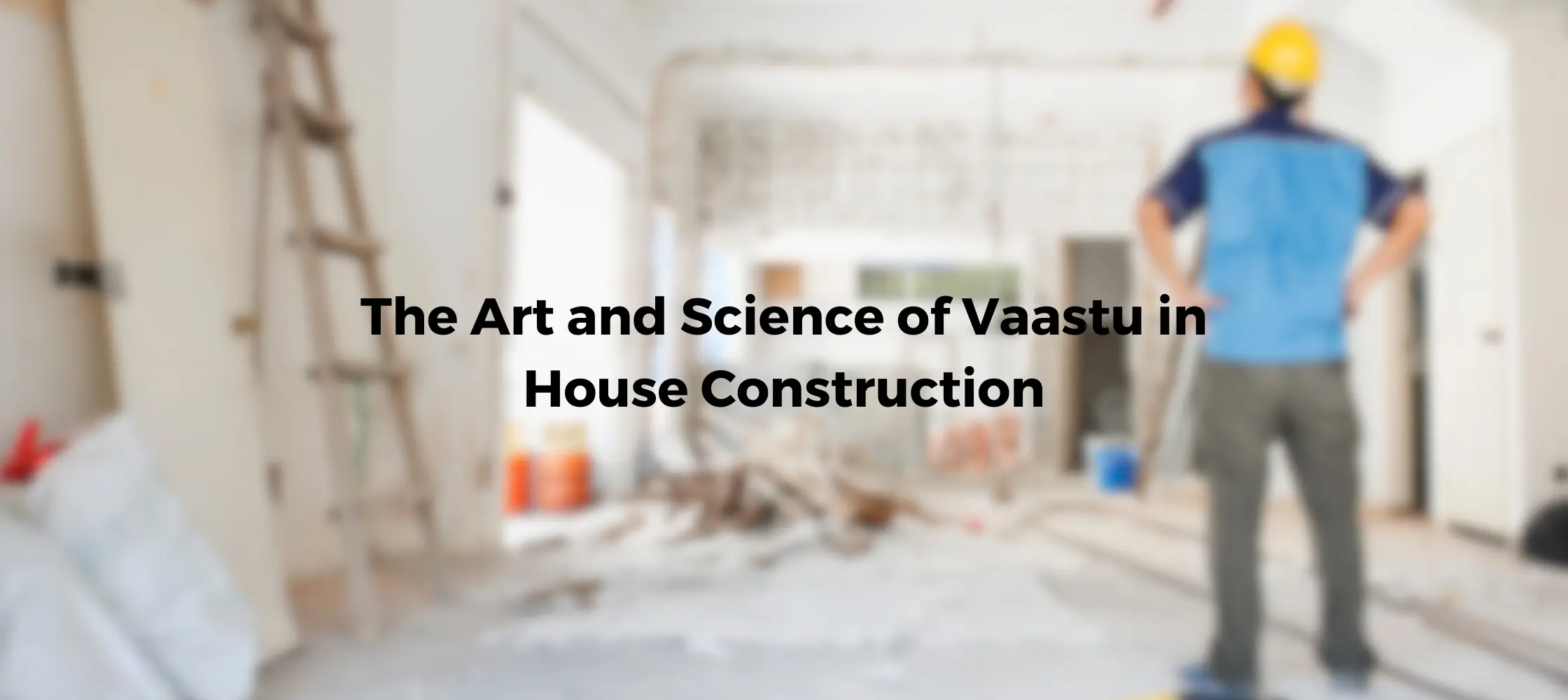
Vaastu Shashtra, an ancient Indian architectural and design philosophy, offers a holistic approach to harmonizing the energies within a living space. Derived from the words “Vasa” and “Shashtra”, Vaastu aims to align structures with the natural forces and cosmic energies to enhance the quality of life for its inhabitants. It is a synthesis of art, science, and spirituality, guiding the placement and arrangement of elements in a building to promote well-being prosperity, and spiritual balance. The principles of Vaastu have been followed for centuries, influencing the layout, orientation, and construction of homes.
Vaastu Shashtra is rooted in the idea that the universe is a combination of five elements: Earth, Water Fire, Air, and Space. These elements are believed to influence our lives and surroundings and a harmonious balance between them leads to prosperity and well-being.
Let us discuss some of the key aspects of incorporating Vaastu in the construction of a house.
Vaastu emphasizes the importance of selecting an appropriate site for construction. Factors such as soil quality, topography, and the surrounding environment play a vital role. The cardinal directions – north, south, east, and west – are crucial in Vaastu, and the orientation of the house with respect to these directions is significant. The ideal direction for the main entrance is typically east, as it allows for the entry of positive energies from the rising sun.
The layout of rooms and spaces within a house is guided by Vaastu principles. Certain areas are considered auspicious for specific purposes. For example, the northeast corner is ideal for prayer rooms or meditation spaces while the south is suitable for bedrooms. The center of the house should be kept open or minimally cluttered, as it is believed to be the cosmic center of energy.
Vaastu emphasizes precise measurements and proportions in construction. The layout should be balanced with rooms and spaces following geometric ratios to maintain harmony. The dimensions of doors, windows, and other architectural elements should also adhere to these proportions to ensure the flow of positive energy through the house.
The materials used in construction also hold significance in Vaastu. Natural materials such as wood, stone, and clay are preferred, as they are believed to have positive vibrations. Synthetic materials like plastic and fiberglass are generally discouraged.
Color psychology is also an integral part of Vaastu. Each color is associated with specific energies and emotions. For instance, warm colors like red and orange are considered energizing, while cooler shades like blue and green promote tranquility. Vaastu recommends using colors that resonate with the purpose of each room, enhancing the desired atmosphere.
Vaastu emphasizes the importance of proper ventilation and airflow within the house. Well-placed windows and ventilation systems allow positive energy to circulate freely stagnant or negative energy is believed to cause discomfort and hindrance to well-being.
The placement of water bodies like wells, tanks, and fountains is a key consideration in Vaastu. These elements are associated with the flow of energy and wealth. Placing a water source in the northeast corner is believed to attract positive energies and prosperity.
In some cases, existing structures might not align perfectly with Vaastu principles. Vaastu offers remedies and corrections to mitigate negative effects. These could involve using specific colors, installing mirrors, or placing certain objects in strategic locations to balance the energies.
To conclude, one can say Vaastu in the construction of a house is not just about adhering to ancient beliefs; it combines architectural wisdom with a profound understanding of human interactions with the environment. By aligning the design and construction with Vaastu principles, homeowners seek to create a living space that promotes harmony, prosperity, and well-being. Whether one follows these principles or adapts them to modern living, the essence of Vaastu lies in its intention to create spaces that resonate positively with the occupants and the universe at large.
*The Rising Panjab may not necessarily subscribe to the opinion expressed in the article. Readers discretion is advised.
Your email address will not be published. Required fields are marked *
29 Jan, 2024
29 Jan, 2024
29 Jan, 2024
25 Jan, 2024